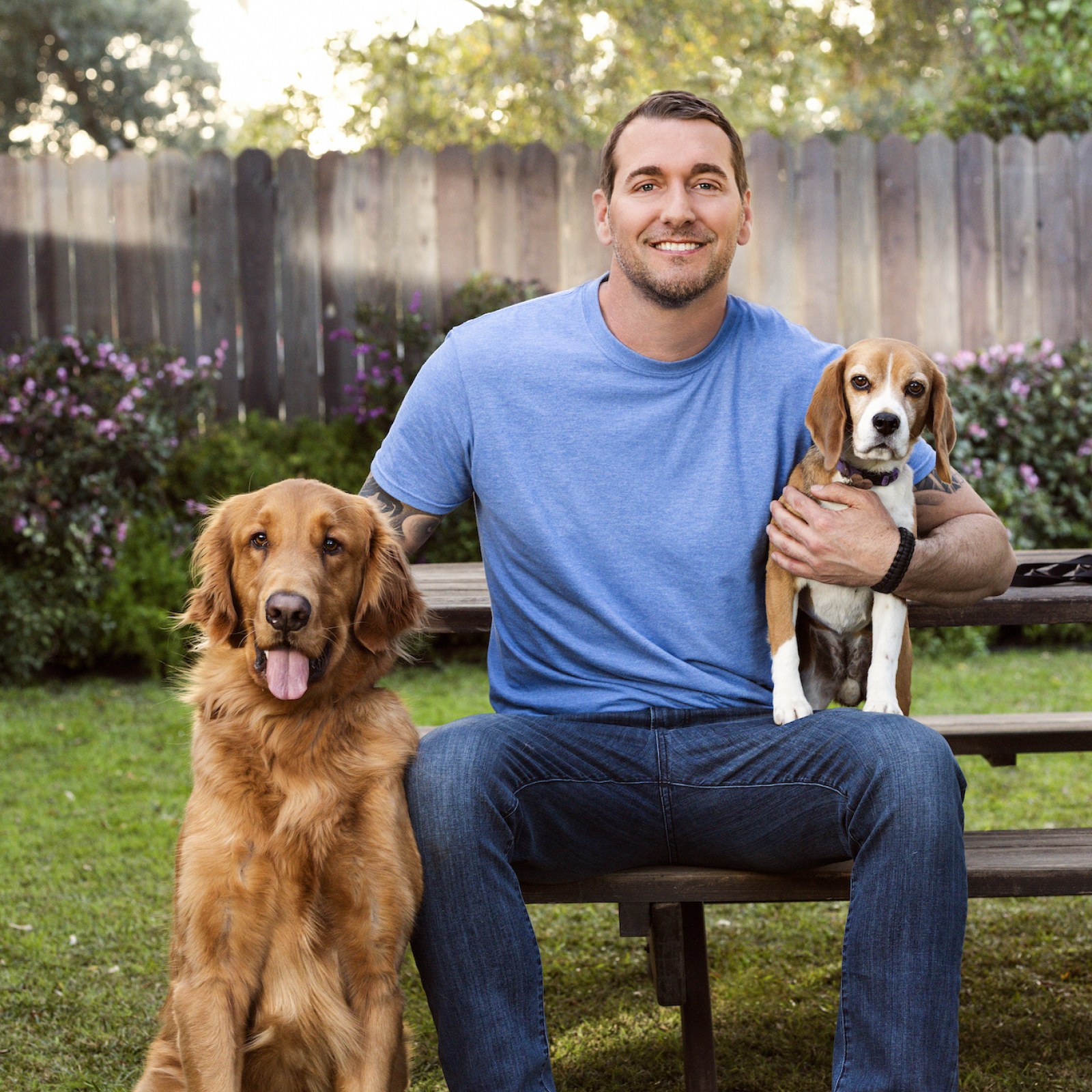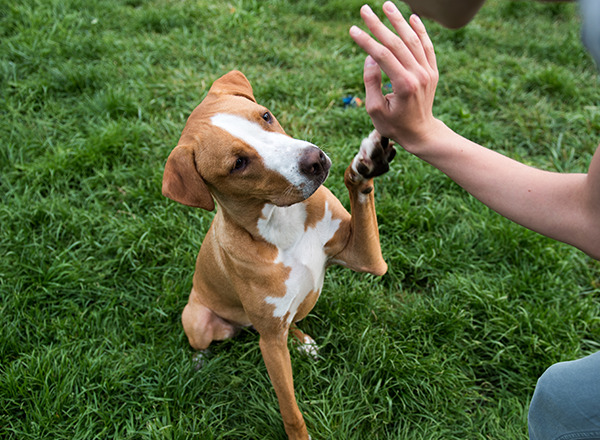Vital Tips for Effective Dog Training: An Overview for Family Pet Owners
Effective pet dog training is a diverse process that calls for a critical strategy customized to both the pet's temperament and the owner's objectives. Understanding exactly how to navigate these challenges can significantly enhance the training experience, eventually transforming the connection in between owner and pet.
Understanding Canine Habits
Recognizing dog habits is crucial for reliable training and cultivating an unified connection in between dogs and their owners. Canines connect mostly via body language, vocalizations, and activities, making it critical for proprietors to translate these signals accurately. Recognizing a canine's posture, tail placement, and ear alignment can supply insights into its emotion. A wagging tail does not constantly suggest joy; it can also signify excitement or anxiety.

Socializing plays a considerable duty in pet dog actions; direct exposure to different atmospheres, people, and other pets can considerably influence a dog's temperament. Furthermore, elements such as type qualities and individual personality should lead training techniques, as some types might have particular behavioral qualities that require tailored strategies. By comprehending these elements, owners can produce a supportive environment that encourages positive habits, causing effective training outcomes and a much deeper bond with their family pets.
Establishing Consistent Commands
Effective interaction with your dog starts with developing consistent commands. This foundational element of training is crucial for cultivating understanding in between you and your pet. Consistency in the commands you utilize guarantees that your pet dog can dependably associate specific words or phrases with the wanted behaviors.
When picking commands, pick clear, distinctive words that are simple to claim and differentiate from each other. Avoid utilizing similar-sounding commands that may confuse your pet. Utilizing "rest" and "stay" is suitable, however "rest" and "struck" could lead to misunderstandings.
Additionally, preserve the exact same tone and quantity for every command. Pets are sensitive to vocal hints, so differing your tone can create complication.
It is equally crucial to make sure that all member of the family are on the same page regarding the commands used. A united front in command use will certainly prevent combined signals and reinforce the understanding process.
Favorable Reinforcement Methods
The power of positive support in pet dog training lies in its ability to motivate desired actions through incentives and appreciation. This strategy is grounded in the concept that habits followed by desirable results are most likely to be repeated. By incorporating favorable support right into your training program, you can effectively form your pet dog's habits in a useful way.
To execute favorable reinforcement, it's vital to recognize what motivates your dog, whether it be treats, toys, or spoken appreciation. When your pet dog carries out a wanted activity, such as sitting on command, quickly compensate them with a reward or affection. This association in between the command and the positive result reinforces their understanding.
It's essential to timing the incentives properly; providing the support within secs of the preferred habits helps your pet make the link (dog training). In addition, consistency is vital-- make sure that all relative make use of the same commands and benefit systems to avoid confusion

Gradually, you can lower the frequency of deals with as your pet discovers the habits, transitioning to applaud or intermittent incentives. This approach not just promotes a solid bond in between you and your pet dog but likewise promotes a positive discovering atmosphere, making educating a delightful experience for both.
Socialization and Interaction
Regularly subjecting your pet to a variety of atmospheres, people, and look at more info various other pets is important for their social development. Socializing needs to start early, ideally during the vital home window of 3 to 14 weeks, when puppies are most responsive to new experiences. Older pet dogs can likewise benefit from ongoing socializing efforts.
Introduce your pet dog to different settings, such as parks, pet-friendly shops, and urban locations. This direct exposure helps them adapt to various stimuli, decreasing stress and anxiety and fear actions. Encourage positive communications with various other pets and people, making sure that these encounters are safe and regulated to promote self-confidence.
Utilize structured playdates with genteel pet dogs, as this can boost your pet dog's social skills and instruct them proper habits. Obedience courses and training sessions additionally supply outstanding chances for socializing, permitting your canine to communicate with others in a monitored atmosphere.
Display your pet dog's body language throughout interactions, as this will aid you evaluate their comfort degree. Slowly enhance direct exposure to more tough scenarios while making sure that each experience is positive. A well-socialized dog is much more most likely to display well balanced behavior, making them a pleasure to have in any type of setup.
Addressing Common Training Challenges
Every canine proprietor will certainly run into training challenges at some time, regardless of their dog's age or socialization degree. Determining common issues such as stubbornness, diversions, and fearfulness can assist in developing efficient methods for enhancement.

Slowly present disturbances as the dog becomes extra proficient in commands. Short, regular training sessions are additionally reliable in maintaining focus.
Fearfulness can impede a dog's knowing procedure. Progressive desensitization to the source of concern, coupled with favorable support, can help minimize stress and anxiety. Persistence is essential; never force a canine into a circumstance that causes distress, as this might exacerbate the problem.
Eventually, understanding and dealing with these typical difficulties with an organized approach will certainly cultivate a much more productive training experience, reinforcing the bond in between canine and proprietor while advertising efficient understanding.
Final Thought
In summary, effective dog training counts on a detailed understanding of canine actions, the facility of consistent commands, and the application of favorable support techniques. Socialization plays an important role in developing well-adjusted family pets, while addressing common training difficulties needs persistence and adaptability. By implementing these essential strategies, family pet owners can promote a solid bond with their pets and promote desirable habits, inevitably leading to a harmonious connection between human beings and their canine buddies.
Understanding pet actions is essential for effective training Clicking Here and cultivating an unified connection between canines and their proprietors.Socializing plays a significant role in canine habits; exposure to various settings, people, and other pets can significantly influence a pet dog's character.The power of favorable reinforcement in dog training exists in its capacity to urge preferred behaviors through incentives and praise. By incorporating positive reinforcement into your training regimen, you can More about the author effectively shape your canine's actions in a positive fashion.
In recap, effective pet training counts on a detailed understanding of canine habits, the establishment of consistent commands, and the application of favorable reinforcement strategies.